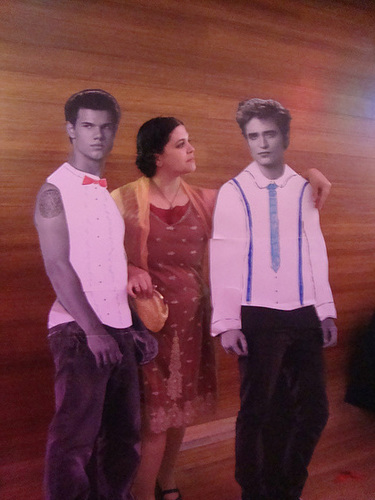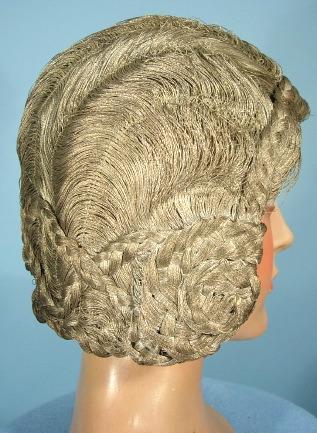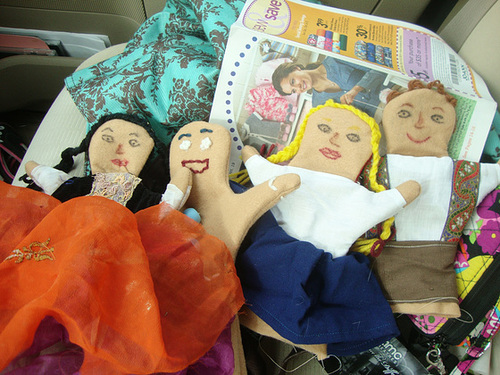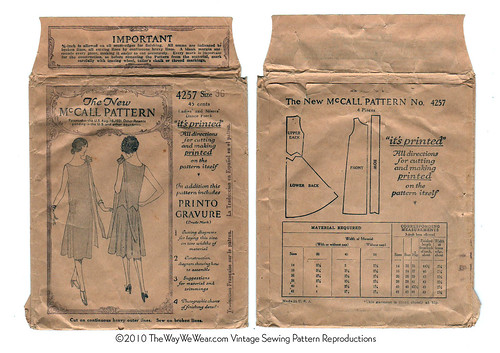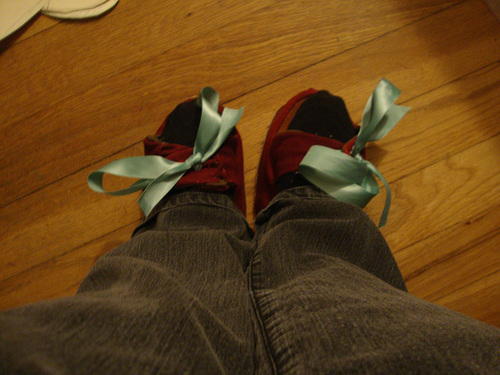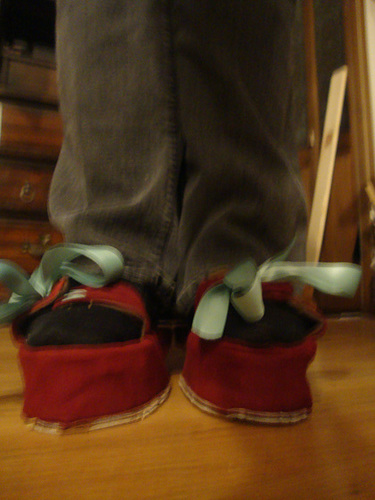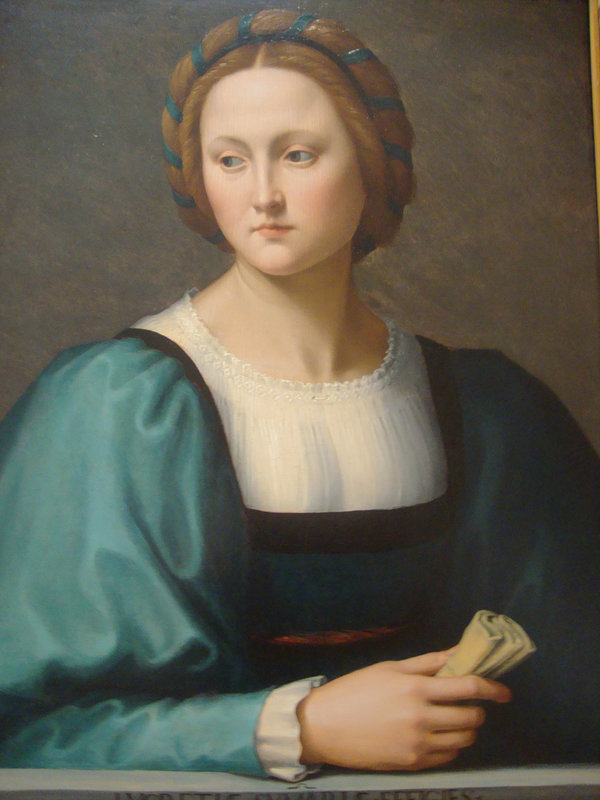The Challenge:Re-make, re-use, and re-fashion
Fabric: Poly acetate 1950's brocade, duck cloth, and cotton for the lining
Pattern: The original gown was Simplicity 8735 - that good ole Ever After Pattern. The back of the bodice is the same as the old dress but the front of the bodice is my own pattern and the sleeves are my own as well.
Year: 1520's Italy
Notions: Tin foil looking trim I got at Joanns, silver ribbon, silver rope
How historically accurate is it? It's a lot better than it was but there really isn't a way to make it accurate when it's poly acetate brocade.
Hours to complete: Maybe 6? I wasn't counting this time.
First worn: Tomorrow, hopefully.
Total cost: I think I spent $6 on the trims. The dress was the first Renaissance gown I ever made - and it's from the 20th Century! (Okay, so just barely..)
Research: First, here's what the gown looked like before I ripped the poor thing apart:
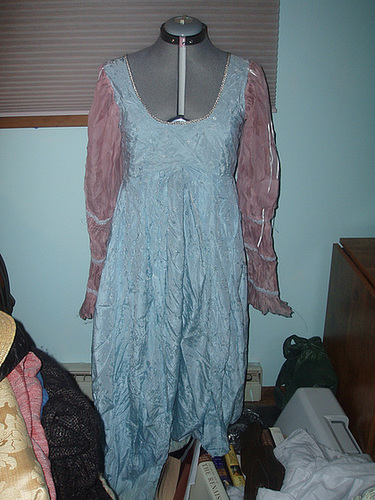
The real silk organza sleeves were pink only because I threw this into the machine with something red. Originally, the sleeves were silver.
This was my very first attempt at costuming. I had sewn a couple of retro dresses before this for Church but I wanted a Renaissance gown for the Renn Faire. The dresses I liked at faire were all in the $1000 range (now $1800 range as my Mom and I discovered last weekend), but, having learned to sew at that point, I knew I could go on this somewhat new thing called ebay, get a fabric I liked, and then sew up the dress. There had to be a pattern out there like that, right? Did I mention this was back in 1999?
Ever After was the latest "costume" movie and I had to have
Danielle's blue library dress. Of course, not really having many pictures of it up on the internet yet and not yet mastering the art of pausing the VCR multiple times ( 1999...), I only remembered two things - it was high waisted and it was blue.
I ended up with something not quite like it but whatever. It worked - I thought. For a grand total of ten minutes. Although I knew nothing of darts and attached sleeves not being accurate for the early 16th C, I did know zippers weren't. Eh, I could cover that up with a coat or my hair, I figured. I made the coat to go with this dress about two projects after this one. I think I sold that poor thing a few years ago.
Anyway, the dress. Oh the dress. Zippers, darts, very odd construction techniques, pink sleeves - it was a complete and absolute disaster to be reworked. I've been wanting to rework it for years - I even saved the larger pieces of brocade to rework it, but I never got around to it until now.
First, I ripped the bodice from the skirt. The skirt itself was okay but I needed to take the front flaps that created a faux overskirt off the main skirt. The faux overskirt panels got cut up to become sleeves, per the images below.
The skirt panels!
First, I cut a 25" long rectangle from the skirt panel to create the upper part of the sleeve.
It's really hard to tell in this picture, but the lower sleeve, which is a trapezoid, and the upper sleeve are pinned to the other skirt panel so I cut out the second sleeve. The bottom of the sleeve will be a bit stained because the bottom of the skirt is stained. Not a big deal, really, as it adds to the idea that this dress is OLD.
See? Dirty cuff! However, the sleeve is now appropriate for the 1520's.
Back of the dress.
Inspiration:
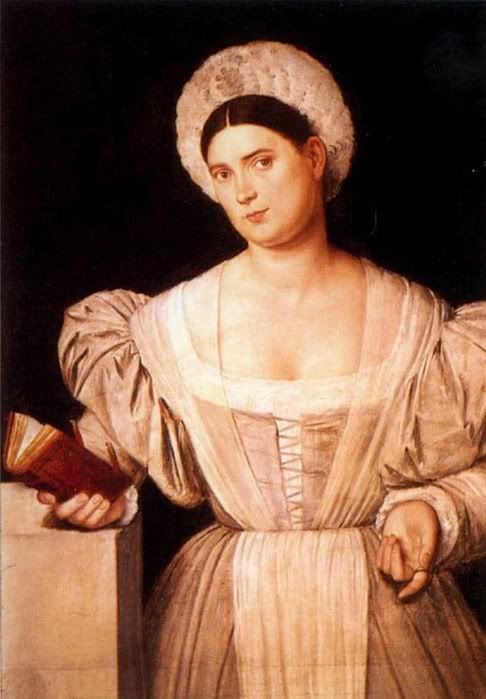
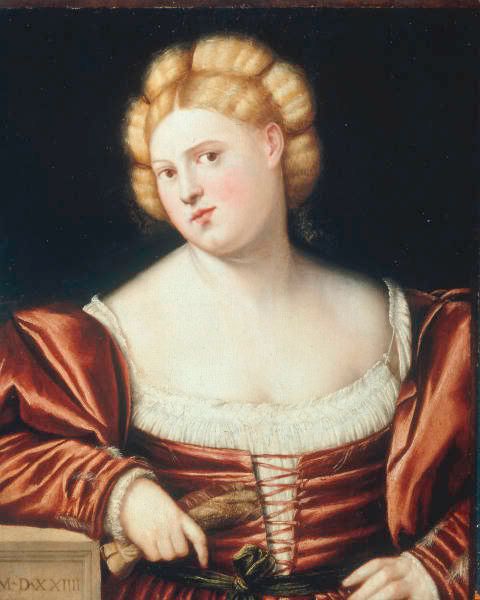
Above are the inspiration portraits for the remade gown
There really isn't much I can do to make it accurate. Right now, the gown is at least at a point where I can see myself wearing it to the Renn Faire again. The cut is correct for the 1520's. However, the fabric is still very much poly acetate brocade (and not silk like I was told in the ebay listing all those years ago) and it is machine sewn. I hand sewed the trims on which hides a bit of the machine sewing but still, there is nothing that would get this to accurate. That being written, I have gotten it, I think, to not visibly garish which is a plus within itself.
Since it is my first Renaissance gown, I wanted to keep it in that style and not bother making it into something else of a different era. I also wanted to get it closer to what the gown was originally intended to look like but with a more accurate cut. Hopefully, I've gotten it there. At least it's not in the UFO pile anymore!!!

